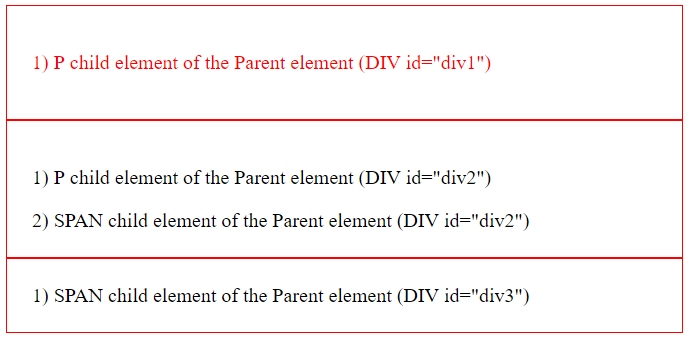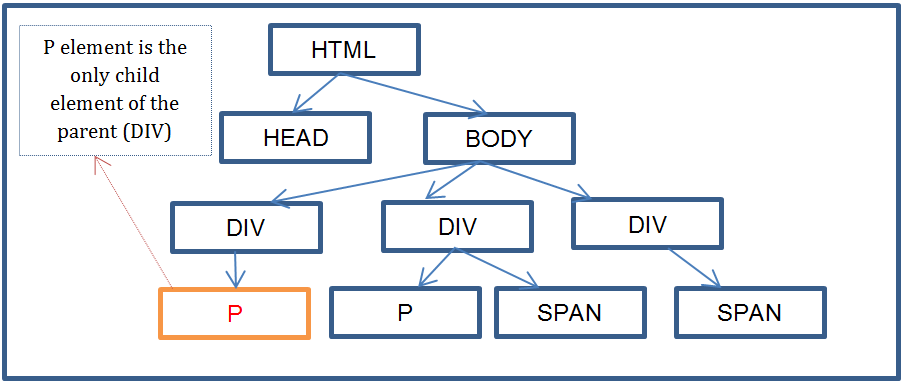
Pseudo-Class - :only-child
Selects a specified element if it is the only child element of the parent element.
Example:
p:only-child {
color: red;
}Above example sets text color (red) to the P child element when child element count is one and P is the only child element under the parent element.
Example:
<head>
<title> CSS pseudo-class selector - :only-child</title>
<style>
p:only-child {
color: red;
}
div {
border: 1px solid red;
padding:20px;
width:500px;
}
</style>
</head>
<body>
<div id="div1">
<p>1) P child element of the Parent element (DIV id="div1")</p>
</div>
<div id="div2">
<p> 1) P child element of the Parent element (DIV id="div2")</p>
<span>2) SPAN child element of the Parent element (DIV id="div2")</span>
</div>
<div id="div3">
<span>1) SPAN child element of the Parent element (DIV id="div3")</span>
</div>
</body>
</html>
Result:

In the above example,
- First DIV (id="div1") element has only one child P element. So style is applied here.
- Second DIV (id="div2") element has two child elements. So style is not applied here.
- Third DIV (id="div3") element has only one child element but that child is not P element. So style is not applied.
Using following Document Object Model (DOM) tree, above example is explained.
